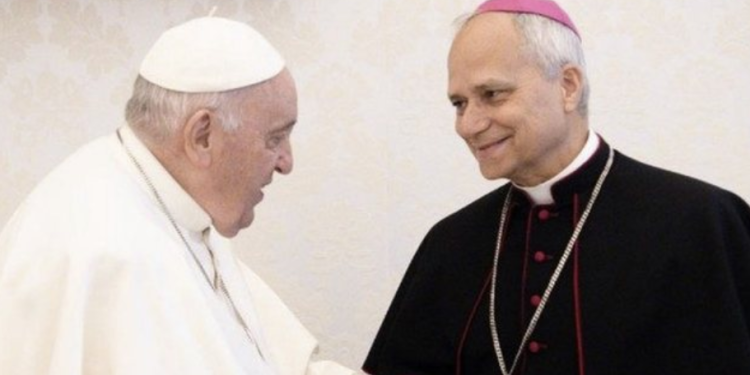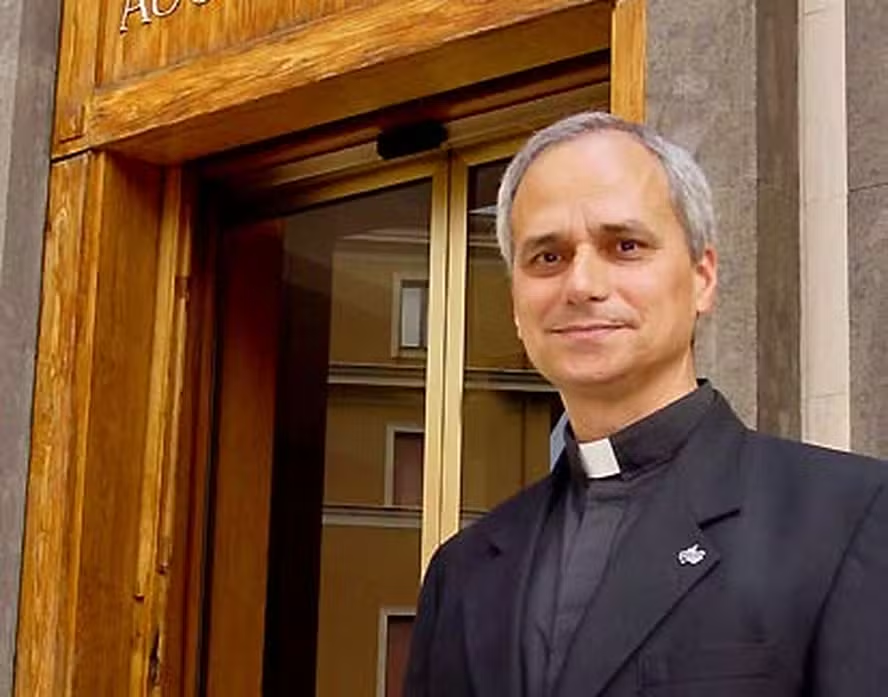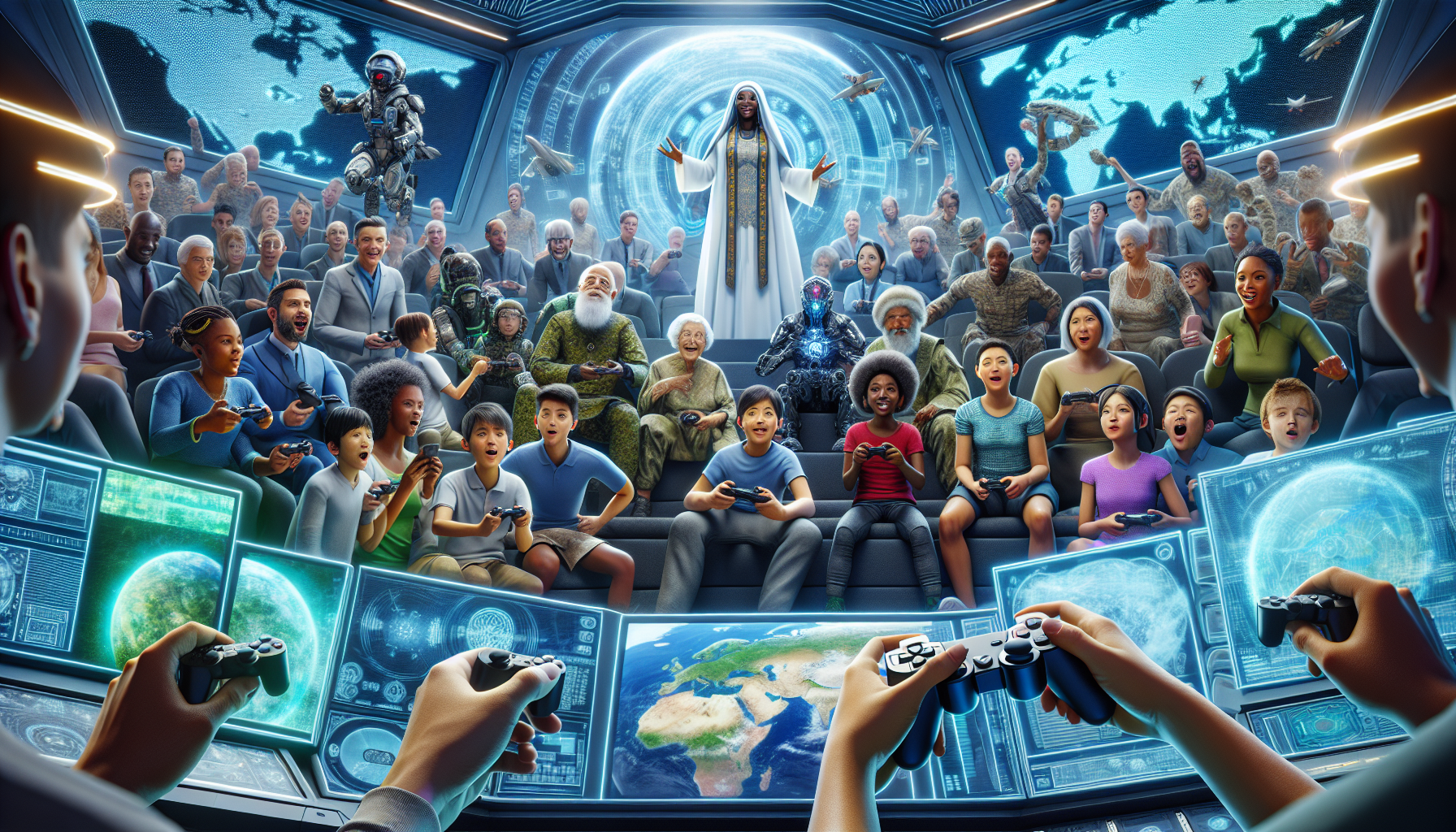Adverts
In the vastness of the geek universe, where science fiction intertwines with reality and transports us to worlds beyond our comprehension, one of the most fascinating themes is the way leaders shape their communities.
Whether you're a starship captain facing moral dilemmas or a wise RPG master guiding your party through uncharted lands, leadership is a powerful and transformative force.
Adverts
And in the real world, there is no more emblematic figure in this regard than the spiritual leader of one of the world's largest religions: the Pope.
Today, we will embark on a journey that transcends the everyday and delve into the story of the new pope, Robert Francis Prevost. 🎩📜
Adverts
Robert Francis Prevost, a name that resonates with an aura of change and renewal, is the focus of our article. In assuming the papacy, he not only inherits centuries of tradition, but also carries the responsibility of guiding the Catholic Church in a world that is evolving at a rapid pace.
But who really is this man who now sits on the throne of Peter? In a global landscape where technology is constantly redefining human interactions and ethical challenges are multiplying, understanding Prevost’s role and vision is crucial to predicting the direction the Church may take under his leadership.
In this article, we will explore the many facets of Robert Francis Prevost, from his origins to his rise to the papacy.
We will investigate his personal and professional trajectory, uncovering what shaped his beliefs and principles. The impact of his education and previous experiences will be a central point of our analysis, as will his early actions and statements as a leader of the Church.
We will also delve into the issues it must face in the 21st century: the relationship between faith and science, the role of artificial intelligence in the daily lives of the faithful, and how the Church can respond to rapid social and cultural changes. 🤖🌍
Related articles:

Historical Context: Robert Francis Prevost's Journey to the Papacy
The global religious landscape often faces changes and challenges that require adaptive and visionary leaders. The election of Robert Francis Prevost as the new pope is an example of how the Catholic Church continues to evolve in response to contemporary needs. Prevost, an American cardinal with deep roots in the Augustinian order, brings to the papacy a combination of pastoral and administrative experience. His career is marked by a commitment to social justice and an open approach to modern issues such as technology and artificial intelligence.
Prevost was born in Chicago in 1955, and his early training was in engineering, an interesting development for a religious leader. This unique combination of technical and theological skills offers a unique perspective on the challenges facing the Church today. After joining the Augustinian order, Prevost served in various capacities around the world, including missions in Latin America, where he became deeply involved in issues of human rights and economic inequality.
Prevost’s role as pope promises to be significant, especially considering his interest in integrating new technologies and sustainable practices into the administration of the Church. This aligns with the growing global interest in emerging technologies and their impact on daily life. With his election, he is expected to lead the Church to a new level of relevance in an increasingly digital and interconnected world.
Theories on the Impact of His Leadership on the Modern Church
With the rise of Robert Francis Prevost to the papacy, there have been several theories about how his leadership might impact the Catholic Church. One popular theory among religious scholars is that Prevost could be a catalyst for reform and modernization of the Church. This includes adopting more transparent practices and using technology to improve communication and governance within the Church.
Prevost has already expressed interest in using digital technologies to connect Catholic communities around the world. This could include implementing online platforms for religious education and facilitating virtual gatherings, allowing the faithful to participate more actively in church life regardless of their geographic location. This approach would not only modernize religious practice, but could also attract a younger audience, who are generally more engaged with the digital world.
Another area of potential impact is Prevost’s approach to contemporary social issues, such as climate change and economic justice. His experience in Latin America and his commitment to social justice could influence the Church’s priorities, possibly resulting in stronger global initiatives in areas such as environmental sustainability and poverty reduction.

Comparing Recent Popes: An Analytical Look
PopeMain FocusTechnological ContributionsSocial EngagementBenedict XVITheology and TraditionLimited Social Media PresenceModerateFrancisSocial Justice and InclusionTwitter and Other PlatformsHighRobert Francis PrevostTechnological Innovation and Economic JusticePotential for New Digital PlatformsPotentially High
For a more in-depth look at comparisons between popes, watch the video below on “Modern Popes and the Transformation of the Church,” available on the channel Vatican News. This video analysis discusses how recent popes have approached changes within the Church and the influence of technology on their administrations.
The Future of the Catholic Church Under Prevost's Leadership
With Robert Francis Prevost at the helm of the Catholic Church, the future promises to be filled with innovation and transformation. One of the most intriguing areas of his potential leadership is the integration of artificial intelligence and other emerging technologies into the life of the Church. This could not only transform the way the Church communicates and interacts with its faithful, but also how it manages its resources and carries out its global missions.
Furthermore, Prevost’s approach to religious education could see a significant shift, with the introduction of digital learning platforms that make knowledge accessible to a wider audience. These platforms could include online courses on theology, church history, and even digital ethics, making religious education more accessible and relevant to modern audiences.
Another key aspect is how Prevost can influence interfaith dialogue. In an increasingly globalized and diverse world, the ability to navigate and mediate conversations between different religious traditions will be crucial. Prevost, with his background in engineering and theology, is well-positioned to foster understanding and cooperation between different religious communities.
Prevost's List of Potential Initiatives
- Introduction of AI technologies for Church administrative management
- Development of digital platforms for religious education
- Strengthening social justice and sustainability initiatives
- Promoting interreligious dialogue through digital platforms
- Expanding the Church’s presence on social media to engage a younger audience
These initiatives not only have the potential to revitalize the Catholic Church, but also to reinforce its relevance in an increasingly digital and interconnected world. When considering the impact of Robert Francis Prevost as pope, it is essential to recognize that his leadership may represent a significant turning point in the modern history of the Church.

Conclusion
The ascension of Robert Francis Prevost to the papacy marks a pivotal moment in the history of the Catholic Church, reflecting a new era of innovation and adaptation in a rapidly changing world. As we have discussed throughout this article, Prevost brings with him a unique blend of technical and theological expertise that enables him to address contemporary challenges with a fresh and inclusive vision. From his early training in engineering to his deep involvement in social justice issues in Latin America, each aspect of his journey paves the way for a papal leadership that promises to be both transformative and deeply rooted in the fundamental principles of the Catholic faith.
Prevost’s significance lies in his willingness to embrace emerging technology and use it as a tool to connect, educate, and engage the global Catholic community. In an age where technology permeates every aspect of life, the ability to effectively integrate digital platforms can redefine the way the Church communicates with its faithful and manages its resources. Implementing artificial intelligence technologies for administrative management, as well as creating digital learning platforms, are just some of the strategies Prevost can adopt to make religious education more accessible and relevant.
Furthermore, Prevost’s commitment to economic justice and environmental sustainability aligns with growing global concerns about the future of the planet and social inequalities. His experience in economically challenged regions such as Latin America and his dedication to social causes position him as a potentially powerful advocate for policies and initiatives that promote more equitable and sustainable development.
Comparing his trajectory to that of his predecessors, we see a pope who can combine Benedict XVI’s theological depth with Francis’ passion for social justice, all while incorporating a robust focus on technological innovation. This combination could not only revitalize the Church, but also attract a younger audience, who are generally more attuned to the digital world and its possibilities.
As we look to the future under the leadership of Robert Francis Prevost, it is clear that the Catholic Church is at an inflection point. The potential initiatives we have discussed, from the use of AI to the promotion of interfaith dialogue, offer an exciting vision of a future where faith and innovation go hand in hand. History shows us that moments of great transformation are often catalyzed by leaders who dare to dream and act differently. Prevost, with his unique combination of skills and experience, appears well-positioned to guide the Catholic Church through such transformations.
I invite you, dear reader, to reflect on the points discussed here and consider how the proposed changes could impact not only the Church, but society as a whole. How can technology serve as a bridge between tradition and modernity? How can social justice initiatives inspire action in our daily lives? Share your thoughts and ideas in the comments below, and feel free to share this article with friends and family who might also be interested in this fascinating intersection of faith, technology, and innovation.
To delve even deeper into the topic, I recommend watching the video “Modern Popes and the Transformation of the Church”, available on the channel Vatican News, which offers a rich analysis of the evolution of the papacy in modern times.
In an increasingly interconnected world, the ability to lead with vision and compassion is more crucial than ever. Robert Francis Prevost offers us an opportunity to observe, learn, and most importantly, actively participate in building a future that honors the past while embracing the future. 🌟
—
I hope this article has provided valuable insights, and I look forward to seeing how each of you can apply these ideas to your own journeys. Let’s explore the potential of faith in a digital world together!




